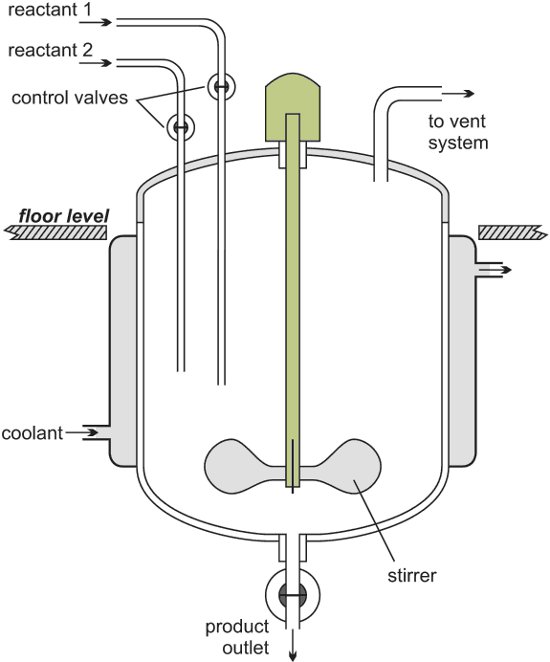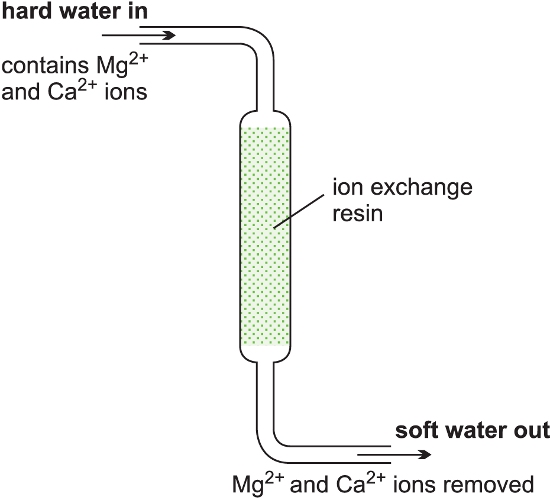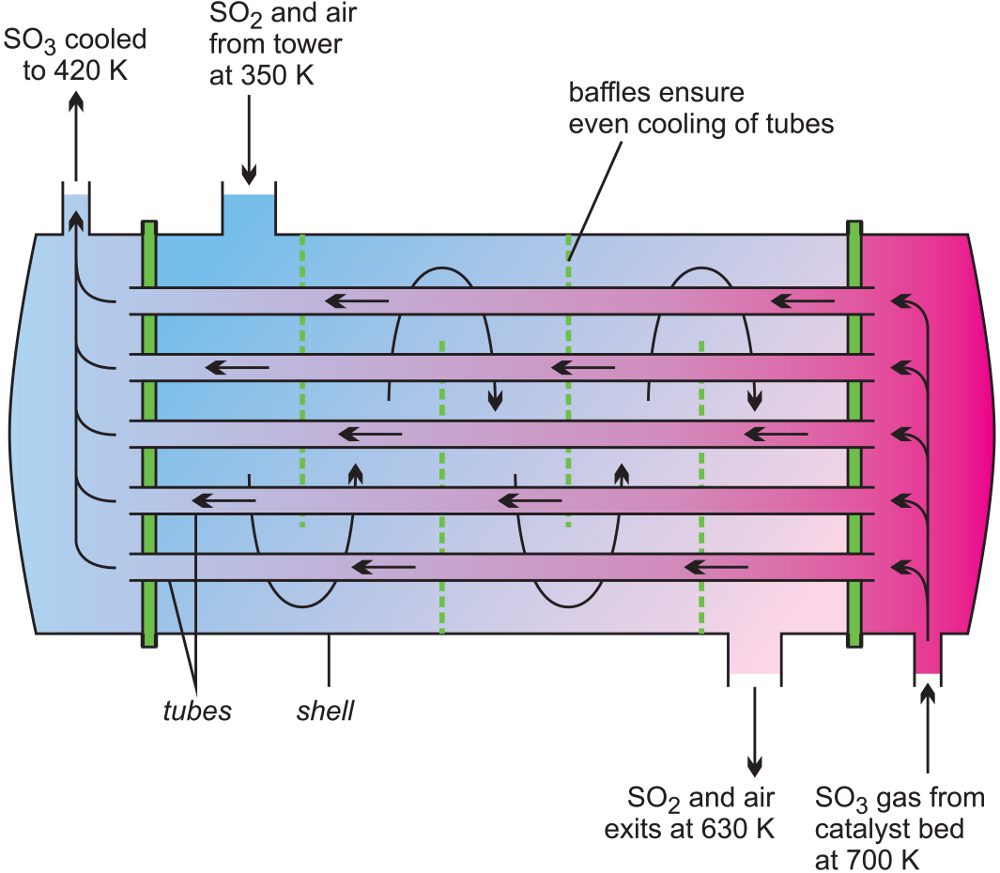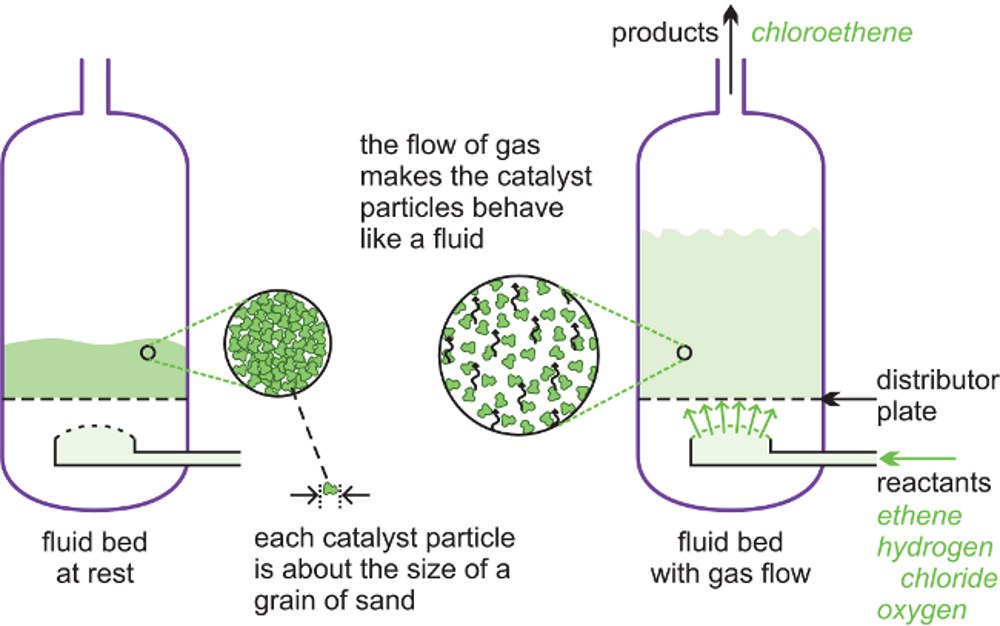Table of Contents
| Table of Contents |
|---|
What are Reactors?
Chemical reactors are enclosed areas in which chemical reactions take place. Chemical reactors can take many forms, but the most basic types of chemical reactors are tanks and pipes or tubes.
Types of Reactors
Batch Reactors
Batch reactors are the simplest form of chemical reactor. Reactants are loaded all at once into the reactor, and the reaction takes place over time. At the end of the reaction, all of the products leave the reactor at once. A good visualization of this process is baking cookies [2].
An example of a Batch Reactor [2] |
|---|
Continuous Reactors
Continuous reactors come in many forms, but generally a continuous reactor is a reactor which continuously takes inputs and releases outputs. A good visualization of this is an assembly line [2].
An example of a Continuous Reactor (Water Softener) [2] |
|---|
Continuously Stirred-Tank Reactors (CSTR)
Continuously stirred-tank reactors are a type of reactor which reactants are introduced into a reactor equipped with an impeller (or stirrer). The products are reactants are continuously removed and added, at a equivalent rate [2].
An example of a Continuous Stirred-Tank Reactor [2] |
|---|
Tubular Reactors
Tubular reactors are a type of reactor which is usually done in connection to a pipe. Reactants flow through the reactor at high velocities and exit as products. A common tubular reactor is a heating pipe [2].
An example of a Tubular Reactor (Heat Exchanger) [2] |
|---|
Semi-batch Reactors
Semi-batch reactors are a type of reactor which are very similar to batch reactors, with the added ability to remove products and add reactants in time [3]. These have many advantages over traditional batch reactors, such as better heat control and in order to aid the amount of reaction reversibility.
An example of a Semi-batch Reactor [6] |
|---|
Catalytic Reactors
Catalytic Reactors are a type of reactor which utilizes a catalyst in order to speed up the rate of a reaction, without consuming the catalyst [4]. There are many types of catalytic reactors, but they all revolve around the same principles of passing the material though or near the catalyst.
Biological Reactors
Biological Reactors are a type of reactor which utilizes a biological transformation or process to perform the reaction [5]. Examples of this are Fermenters, which uses yeast (a single cell fungi) to convert sugar into ethanol.
An example of a Biological Reactor [7] |
|---|
Fluidized Bed Reactors
Fluidized Bed Reactors are a type of reactor which involve using fine particles which sit on a distributer plate. This style of reactor is usually intended for gaseous reactants. Theses reactants pass through the particles and exit through the top of the reactor [2]. There are two main types of fluidized bed reactors, inert and catalytic. The type refers to the fine particles, which can either be inert or catalytic.
An example of a Fluidized Bed Reactor [2] |
|---|


.jpg)



